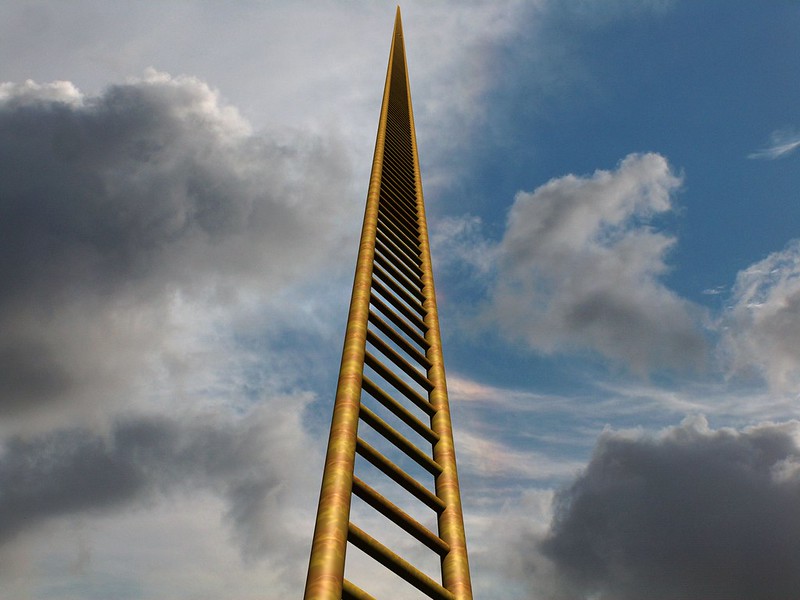
Last updated: September 14, 2024
Lectio divina (Latin for “divine reading”) is an ancient monastic spiritual practice – a contemplative way to connect with the aliveness and wisdom of sacred texts. Traditionally, the texts are scripture readings, but texts could include other spiritual writings, nature, art images, music, poetry, or even the text of our own lives.
There is a long history of practicing lectio divina, and the roots of this prayer method date back to the early church. Desert monastics from the 4th and 5th centuries CE memorized scriptures and meditated on them extensively, since handwritten manuscripts were very expensive and hard to come by. This ascetic movement honored a repetitive rumination and slow pondering of the scripture passages.
Lectio divina was also practiced as monastic life continued to develop, during the 6th century, in the communities of Saint Benedict, his sister Saint Scholastica, and their followers. In the Benedictine rule, it is written that we should “listen with the ear of our heart” and cultivate an inner hospitality.
The earliest description of lectio divina was written in the 12th century by Guigo II. He was a Carthusian monk who was the prior of the Grande Chartreuse monastery in what is now southeastern France, from 1174-1180. He wrote a short book called Scala Claustralium (The Ladder of Monks) that is also sometimes called Scala Paradisi (The Ladder of Paradise). This book is considered to be the first written form of a systematic prayer method in the Western tradition. Guigo describes the structure of lectio divina as four progressive steps or rungs of a ladder, which are Lectio (Reading), Meditatio (Meditation), Oratio (Prayer) and Contemplatio (Contemplation). He states that these four steps or stages include “reading that seeks the sweetness of life, meditation that finds it, prayer that requests it, and contemplation that experiences it.” In traditional lectio divina, you read the selected bible verses four times – once before each step of prayer – moving through a process of reading for comprehension, finding connections, responding to God, and contemplation. Just remember the four Rs: reading, reflecting, responding, and resting.

The following, more comprehensive description of the lectio divina process is primarily informed by two books: Sacred Reading by Michael Casey and Lectio Divina by Christine Valters Paintner. In contrast to Guigo’s model, Valters Paintner describes lectio divina as four spiral movements that are not linear and do not have static boundaries. Together, they form a gradual, evolving, unfolding spiral motion. It’s spiral because of the repeated nature of the reading process, but every repetition brings us back to a slightly different place. These movements are fluid and organic, sort of like transitioning from one yoga pose to another. Ideally, each movement flows gently into the next.
Before beginning, it is good to find somewhere quiet for 20-30 minutes for this prayer exercise. Breathe gently, relax into the silence, and make space in your heart for the presence of the One Who Is Already Within. In doing this, we resist the belief that there are “right” or “wrong” ways to pray and focus. Instead we can find a way to be authentically present, speaking to God directly from our hearts.
You may want to light a candle and begin with a blessing. You can write your own or you can use the one I wrote:
Opening Blessing – When lighting this candle and crossing over from ordinary time to sacred time, may my heart be opened to receive the Grace and Mystery of the Divine One. Create room in my heart to receive the sacred texts that are given today. May the words settle into the rhythm of my breathing and the beating of my heart. May I become radically open to the Voice of God, who is already deep within me. Allow me to sink into silence, listen deeply, and respond soulfully. Amen.
Movement One: Lectio – The first movement of lectio divina is an Introductory Reading for Comprehension or what Guigo II describes as “to attentively look upon the scriptures with a well-collected spirit.” I love the phrase “a well-collected spirit” because it so clearly expresses the process of easing into the rhythm of sacred time and getting our mind and heart centered in the right place. A well-collected spirit facilitates a way for us to be radically open to the now of the prayer practice.

This movement is all about orientation, settling into silence, releasing expectations, letting go of whatever is not needed, and becoming open to the sacred text. It is a time for awakening, paying attention, and reverential listening. Valters Paintner writes that in this first reading, the task is to find a word or phrase of the text that particularly appeals to you (or disturbs you), what she calls words that “shimmer.” This is the phrase to bring along into the next movements of lectio.
Movement Two: Meditatio – The second lectio divina movement, Reflecting on the Connection to Self, is about finding a correlation between the text and your own relationships and life’s journey. It is called “the act of the soul’s reflection, seeking to know hidden truths by the light of the mind” by Guigo II. This means the main goal of this movement is to discover new ideas by finding congruence between our inner selves and the sacred text.
In this movement, we ponder and savor the text, engage our curiosity, cultivate inner awareness, and listen for possibilities. Our brains are wired for making connections, so this step includes welcoming our senses, being stirred by our memories, looking at our past experiences, exploring new metaphors, and unfolding room within for ideas that resonate with the text. We need to engage both sides of our brain – to rely on both thinking and feeling, opening to our intuition as well as our logic. Sometimes this means that we also need to find a way to hold paradoxes within.
Movement Three: Oratio – This movement, what I call Responding from the Depths of Soulfulness, and what Guigo II names as “the pious intention of the soul towards God, saving us from evil and granting to us the good” is about listening for a call or summons and then responding from our souls to God.

Through a deepening awareness and sensitivity to our feelings, it is about uncovering who we are called to be, finding personal meaning, savoring connections, transforming in self-compassion, moving into service, discerning, integrating, and unfolding in the awareness of what is.
Movement Four: Contemplatio – The final movement of lectio divina, what I call Remaining with the Divine in Love and Gratitude, is what Guigo II names as “a type of elevation that comes to the soul that is attached to God.”
After reading, connecting, and integrating, the last lectio movement centers around resting in God. This is about slowing down even more, releasing words and thoughts, lingering with God, yielding to the Divine, and remembering who we are. It is a time for expressing gratitude, moving toward our deepest selves, cultivating contentment, renewing our spirits, and waiting lovingly and expectantly.
After completing lectio divina, you might want to journal about the experience. As Valters-Paintner writes, “Journaling makes time to name what has moved in you and to honor it.” Here are a few journal prompts:
Lectio: How did you experience settling into silence? What were the words in the reading that shimmered the most for you? How does the reading lead you to listen with the ears of your heart?
Meditato: What is the reading or quote saying to you? What thoughts and feelings are evoked? What memories are surfacing from within? Is there a connection to your current life and relationships?
Oratio: How are the words of the reading calling you to respond on your spiritual journey? In what ways did deep listening lead you to a new awareness of the presence of God?
Contemplatio: How did it feel to rest in the presence and abundance of God without self-judgement?

Do you have experiences of praying lectio divina and suggestions that you can share? Please consider scrolling down and posting a comment to this blog post. We would all love to hear from you!
UPDATE: This blog post was updated on September 14, 2024 to include new wording for the opening blessing and to make minor editorial changes.
Reference 1: Christine Valters Paintner, Lectio Divina the sacred art: Tranforming Words and Images into Heart-Centered Prayer, SkyLight Paths Publishing, Nashville, TN, 2011.
Reference 2: Casey, Michael, Sacred Reading: The Ancient Art of Lectio Divina, Ligouri Publications, Ligouri, MO, 1995.
Reference 3: Guigo II, Lectio Divina: The Ladder of Paradise, Xavier Morin, trans., Amazon Kindle, 2014.
Image 1: fdecomite, flickr.com, Jacob’s Ladder, CC BY 2.0 DEED, September 20, 2010.
Image 2: CaptSpaulding, flickr.com, Ladder Canyon, CC BY-NC-ND 2.0 DEED, November 29, 2017.
Image 3: Finley, Timothy, flickr.com Ladder to the Sky, CC BY-NC 2.0 DEED, December 3, 2008.
Image 4: MyEyeSees, flickr.com, Ladder Up Adobe Wall, CC BY-NC-ND 2.0 DEED, July 4, 2008.
Image 5: Bussey, Tadson, flickr.com, Ladder, Santa Fe, NM, CC-BY-ND 2.0 DEED, February 5, 2006.















Leave a Reply
Join the conversation by submitting a comment to this blog post below.